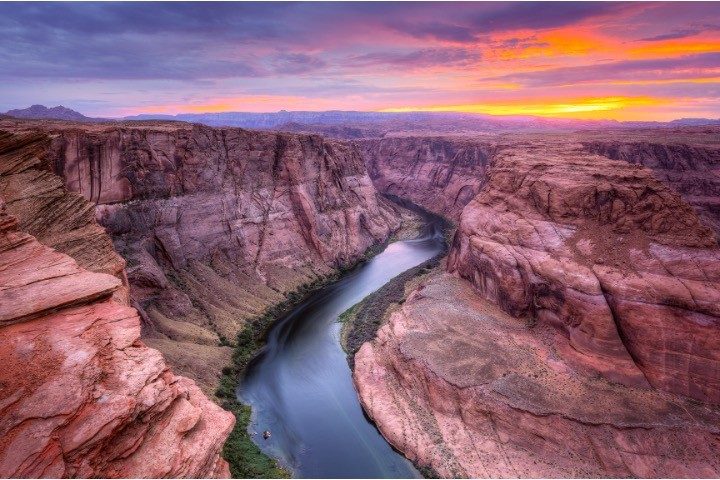
Max Gomberg, a long-serving member of the California State Water Resources Board, has resigned his post, citing “dark and uncertain times” ahead as states in the Colorado River basin deal with a dramatically dwindling water supply from the Colorado River. He blamed California Democratic Governor Gavin Newsom’s administration’s unwillingness to make changes during a drought in the state.
In his resignation note posted online in July, Gomberg accused the governor of siding with defenders of the status quo, and also faulted those in his agency who failed to push back. “Witnessing the agency’s ability to tackle big challenges nearly eviscerated by this Administration has been gut wrenching,” he wrote. “The way some of you have simply rolled over and accepted this has also been difficult to watch.”
Gomberg added, “These are dark and uncertain times, both because fascists are regaining power and because climate change is rapidly decreasing the habitability of many places.” Invoking a woke policies wish list, he continued, “Sadly, this state is not on a path towards steep cuts in greenhouse gas emissions reductions, massive construction to alleviate the housing crisis, quickly and permanently reducing agriculture to manage the loss of water to aridification, and reducing law enforcement and carceral budgets and reallocating resources to programs that actually increase public health and safety.”
However, all of those woke policies Gomberg desires would come at a cost that will eventually lead to higher costs for just about everything involving water usage, especially farming.
Groundwater levels are declining in many farming areas, and wells that people depend on in nearby communities are at risk. According to California state records, more than 4,500 household wells have been reported dry in California since 2015, including 699 so far this year, many in the Central Valley.
The Central Valley of California is quite important, and water is like liquid gold in the western U.S. Although the valley represents less than one percent of U.S. farmland, it supplies eight percent of U.S. agricultural output (by value) and produces one-quarter of the nation’s food, including 40 percent of the nation’s fruits, nuts, and other table foods.
It’s estimated that, on average, agriculture consumes nearly 80 percent of the water that is pumped and diverted each year in California. Thus, the current drought is making it difficult for many farmers to produce enough food to meet demand while dealing with limited water resources.
Then we have a requirement by the U.S. Bureau of Reclamation, announced by Commissioner Camille Touton in July, that as much as two to four million acre-feet of water conservation would be needed in 2023 as a short-term action to support water levels in Lake Mead and Lake Powell. Touton said if the seven states comprising the Colorado River basin (Colorado, Utah, Wyoming, New Mexico, Arizona, California, and Nevada) did not come up with a plan, the bureau would do everything to “protect the system,” which means the federal government would impose its own solutions on those states.
On July 18, the four upper basin states — Colorado, Wyoming, Utah, and New Mexico — sent a letter to the federal Bureau of Reclamation with a five-point plan for addressing dwindling water levels. Colorado claimed it has already done its part to conserve and that it is now up to the lower basin states — Nevada, Arizona, and California — to come up with the water needed to preserve hydropower at both the Glen Canyon Dam, which is on Lake Powell, and the Hoover Dam, which is on Lake Mead. But even the combined annual water allocation of the lower basin states wouldn’t be sufficient to conserve four million acre-feet of water.
California holds the largest swath of water rights to the Colorado River, according to the 1922 Colorado River Compact. The agreement divides the river’s water between the seven states, or signatories, and California gets 4.4 million acre-feet of that water annually, more than any other state.
However, with over 840 miles of coastline, California has the luxury of accessing the Pacific Ocean to help with their water needs. You would think that their leaders would look to that water source for their needs and not a river that six other states also have to share, and would invest in more desalination plants to help ease the effects of the drought and dwindling water supply. (Desalination is the process by which ocean water is purified and treated to make it usable for drinking and agriculture.)
Some have tried. Poseidon Water planned to open a large desalination plant in Huntington Beach, which lies about thirty miles south of Los Angeles in one of the driest areas of the state. If constructed, the plant would have provided some 50 or so million gallons of clean drinking water every single day.
However, woke environmentalists were too concerned about the dangers the plant might cause to marine life in the area, and this led to the decision of the California Coastal Commission to unanimously reject a long-standing proposal to build the $1.4 billion seawater desalination plant.
With the future of precious water supplies for the western United States at a crisis point, it seems that a rebellion is forming between all the interested parties.
The answer to this crisis lies both with the government and the people.
The government needs to lift the woke environmentalist regulations that heavily contribute to the drought, and the people — using American ingenuity — need to be allowed to utilize new inventions and innovations to solve the water supply issues.




